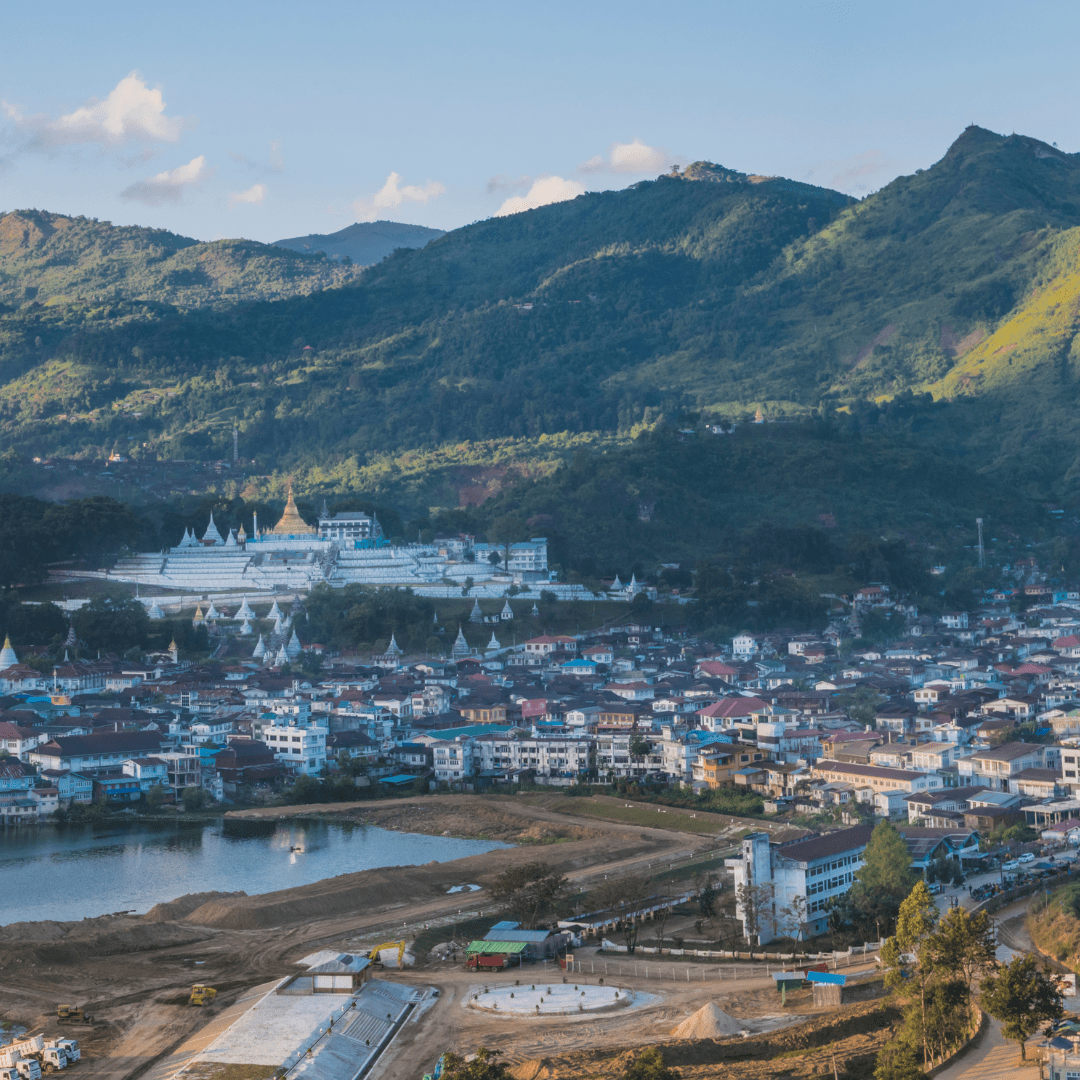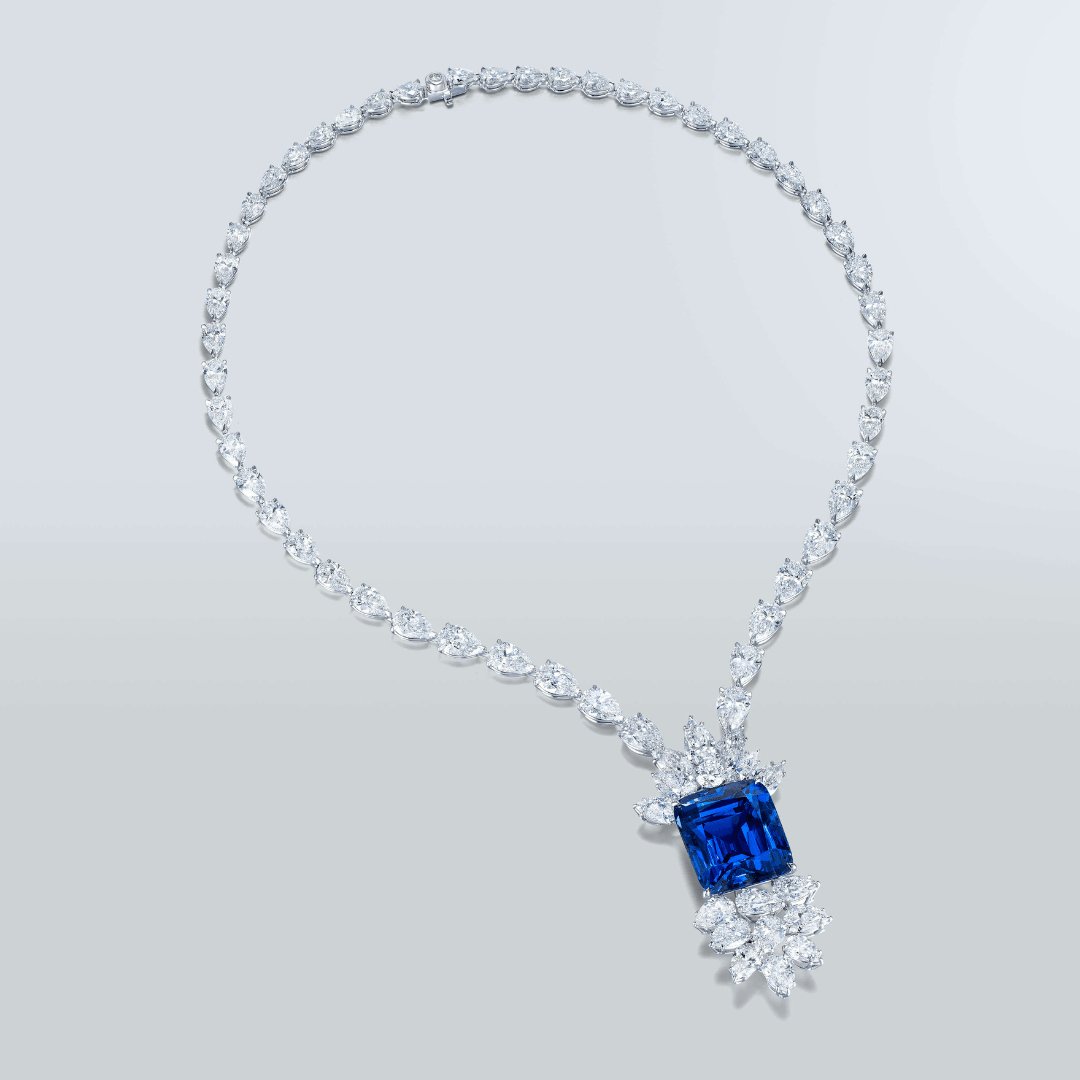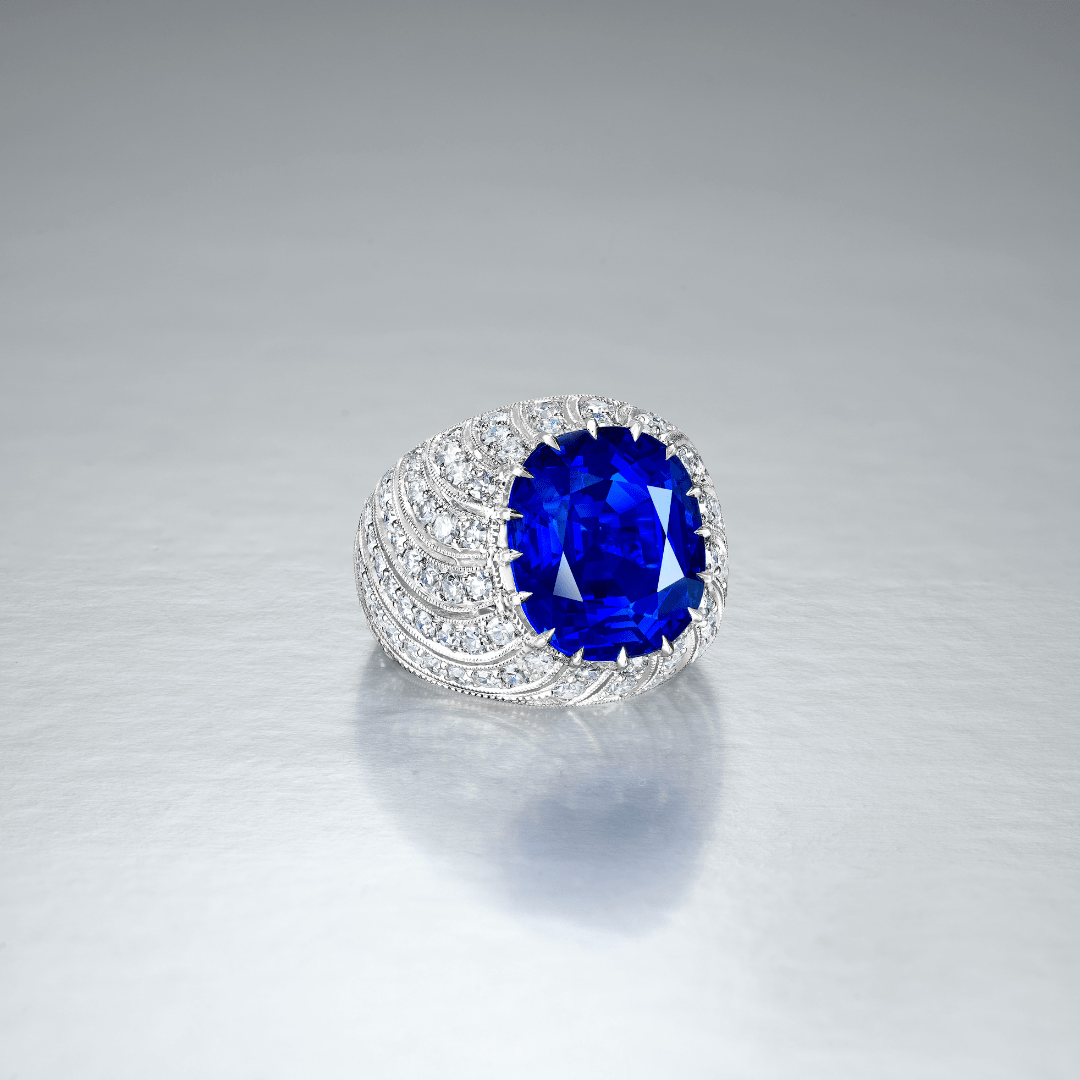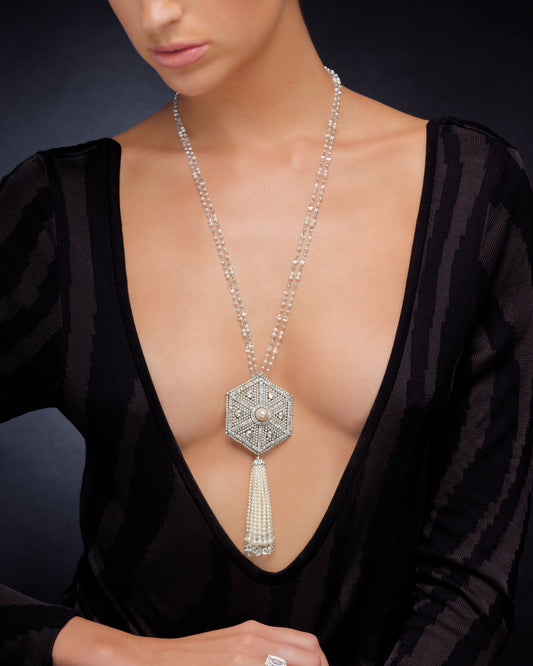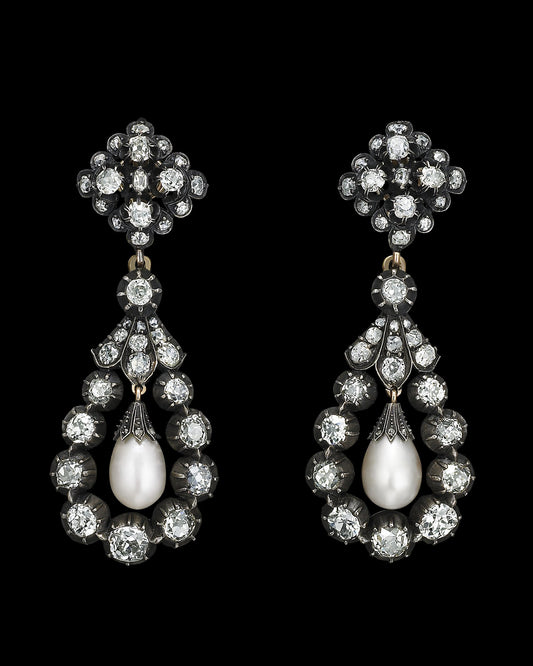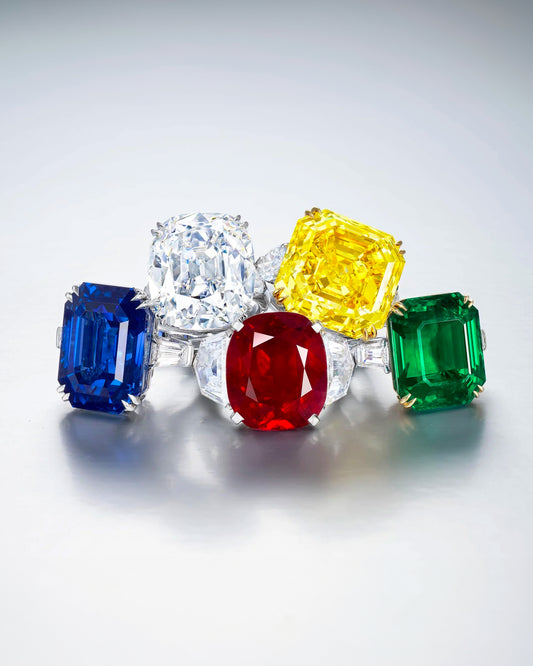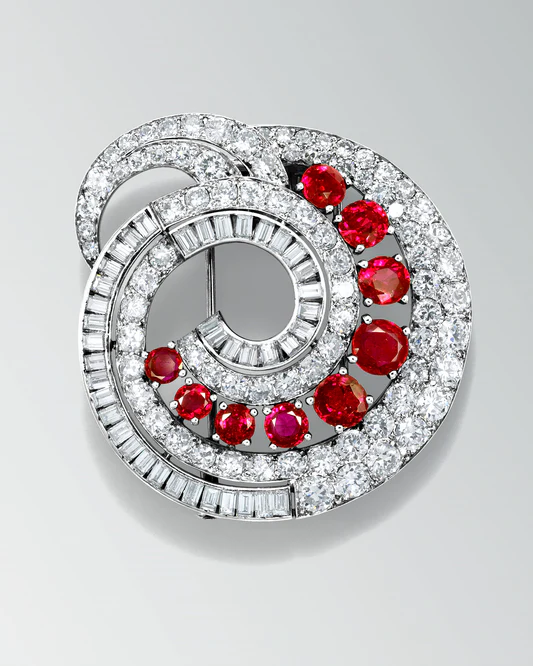
Beyond the Origin
We’re often asked by aspiring collectors which sapphire region we recommend. In an industry dependent on grading and in a world conditioned by ranking and rating, we tend to expect a simple answer. The reality is, every sapphire region produces stones worthy of collection. It takes a skilled collector to know where to find them and how to recognise them.
In our experience, the true value of a sapphire shouldn’t be discerned simply by its origin or assessed solely by its gemmological certificate. A real collector will look beyond region and be able to assess and appreciate a piece based on the most important factor of all, beauty.
Origin is not a guarantee of quality
In the long history of sapphire mining, some locations are so revered they’ve developed their own prestige and mystique. Sapphires which originate from these areas are more valuable and therefore collectable. It is also true that certain locations are known for producing sapphires with specific qualities. An example would be Kashmir sapphires with their characteristic velvety glow.
But in our experience as both a sapphire trader and collector, origin is neither a prerequisite for beauty, nor a guarantee of quality. Each stone must be examined on its merit. That said, in order to establish a stone’s value, origin must be taken into consideration. There are four major sapphire producing regions; Madagascar, Sri Lanka, Myanmar and Kashmir. If we examined a stone from each of these regions and found the characteristics were equal, the value of the stone would be determined by its origin, with the Kashmir stone being the most valuable. At Ronald Abram, origin is an essential consideration but should never outweigh beauty.
Origin is neither a prerequisite for beauty nor a guarantee of quality.
Madagascar Sapphires
Madagascar has been producing sapphires since the 1990s. The market there has grown significantly in this time, and today it is well-known as a source of coloured sapphires in nearly every possible hue. The hub of sapphire activity is the town of Ilakaka in the southwestern portion of the island. From here, pink, purple, yellow and orange sapphires find their way into the international gemstone marketplace. A small number of exceptional blue sapphires mined there have also been shown to rival their Burmese, Kashmir and Ceylon counterparts.
As a brand, we have an affinity for sapphires from Madagascar because some can appear very similar to Kashmir sapphires. If you are looking for a Kashmir sapphire and it’s out of your price range, a Madagascar sapphire would be a good alternative. In terms of value, stones from this region are likely to maintain rather than appreciate given mining volumes and availability, however they are an excellent choice for everyday wear.
Sri Lanka - Ceylon Sapphires
The southern area of Sri Lanka, formerly known as Ceylon, has historically been an abundant source of minerals. The continuous mining in the region means they’re the predominant sapphire in the market. The sapphires that originate from here come in a full spectrum of blues and offer more tonal variance than the other sapphire-producing regions in the world.
The range in colour and overall availability also means there’s wide pricing variations, which is appealing to a broad range of collectors from entry level to high-end.
For estate and vintage jewellery lovers, Ceylon sapphires are represented in many antique pieces. Their long history and prevalence in the market has always made them a favourite among the leading jewellery houses. Today, they are still a popular sapphire and feature heavily in important sapphire collections.



Myanmar - Burmese Sapphires
Burma, known today as Myanmar, is located in Southeast Asia and boasts a particularly renowned gemstone mining region, Mogok, north of Mandalay. This area is known for producing exceptional rubies but also richly saturated blue sapphires that often secure the coveted "Royal Blue" characterisation. The mining of these sapphires is sporadic which means there’s no consistent source of them in the market. Historically, these sapphires have been held in high regard and you’ll often find exceptional quality Burmese stones in many important collections.
While the relative scarcity of these stones positively affects value, other factors need to be considered such as colour. There’s a fine saturation line you find in Burmese sapphires that can result in the stone appearing too saturated or “over colour”. This is often difficult to distinguish and requires guidance from a gem expert who can also provide direction on value.
Kashmir Sapphires
We describe Kashmir sapphires as a collector's dream because they embody so much of the history, romance and beauty of coloured gemstones. Mined in the remote Himalayan mountains in the late 19th century, they are among the most beautiful gemstones in the world. As this source of sapphires has long been depleted, sapphires from this geographic location are also enticingly rare. The most desirable Kashmir sapphires contain unique, needle-like "silk" inclusions that give stones a velvety glow as if they are lit from within. But even being a Kashmir sapphire is not an assurance of quality, only of origin. Once again, expert guidance is required to differentiate stones mined from this region.
When it comes to colour, historically, the "Cornflower Blue" Kashmir Sapphires have always been the most sought after. In more recent years, "Royal Blue" has become the colour tone of choice for collectors and has overtaken "Cornflower Blue" as the most valuable colour tone. As a brand, we see beauty and value in both tones.
It’s also worth noting that the lore of a particular geographic origin, like Kashmir, wrongly implies that the richest and most saturated "Royal Blue" gems only come from this location. In fact, "Royal Blue" gems are mined from every region. Our advice is, if you’re in the market for a "Royal Blue" sapphire, don’t narrow your search to sapphires from a particular origin, find the stone that’s most appealing to you.
Look at the stone first,
how does it make you feel?
The Role of Gemstone Certificates
Another key tool for determining value is the certificate. And while important, it shouldn’t be used in isolation to determine a stone’s value. Take two, 10-carat Sri Lankan sapphires with identical reports, one could be worth five times more than the other. Like any gemstone, the overall quality goes beyond the certificate. But unlike the 4Cs of diamonds, coloured gemstones don’t have a similar, industry-wide grading system for determining their quality. This is why the knowledge and guidance of a gem dealer becomes so vital for collectors.
Valuable sapphires with prestigious origins, like Kashmir and Burma, should be accompanied by reports from established and reputable grading houses. As each laboratory may have its own benchmarks for assessing origin, we suggest having two, if not three, certificates that all agree on provenance.
As with all gemstones, there are many factors to consider when acquiring a sapphire. Relying on certificates alone can result in a paper-driven acquisition where beauty is relegated to second or third position behind characteristics and origin. Our advice to collectors, both seasoned and aspiring, is always look at the stone first, how does it make you feel? Only by studying stones can collectors truly develop their own tastes and judgements. After that, if origin is still an important factor in your decision-making, get the correct gemmological documentation and above all, seek the right expert advice.
